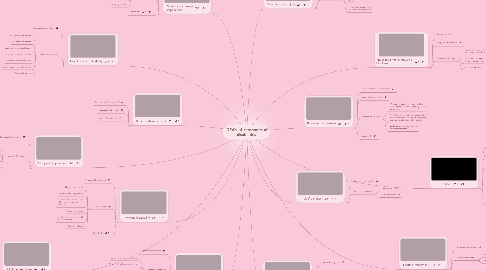
1. Developmental delay
1.1. Suggested Intervention
1.2. Assistive Technology
1.2.1. Sounding keyboard and mouse
1.2.2. Ginger spelling/homonym checker
1.2.3. Write:Out Loud/ Email2phone
1.2.4. In-Vehicle Assistive Technology Brain-Computer Interfaces
1.3. Case Study
2. Intellectual disability
2.1. Suggested Intervention
2.2. Assistive Technology
2.2.1. Picture-based books
2.2.2. Speech-generating devices
2.2.3. Smart Boards in combination with computer-assisted software
2.2.4. Screen magnifiers
2.2.5. Vibrating pages for those with visual impairments
2.2.6. Life alert watches
2.3. Case Study
3. Multiple disabilities
3.1. Examples of types
3.2. Suggested Intervention
3.3. Assistive Technology
3.3.1. IntelliTools
3.3.2. IntelliKeys
3.3.3. Clicker5
3.3.4. Smart Boards
3.4. Case Study
4. Orthopedic impairment
4.1. Suggested Intervention
4.2. Assistive Technology
4.2.1. Screen reading software
4.2.2. Speech recognition software
4.2.3. Augmentative and alternative communication devices
4.2.4. Academic software packages for students with disabilities
5. Other health impairment
5.1. Specific Health Impairment
5.2. Suggested Intervention
5.3. Assistive Technology
6. Specific learning disability
6.1. Suggested Intervention
6.2. Assistive Technology
6.2.1. Abbreviation expanders
6.2.2. Alternative keyboards
6.2.3. Audio books and publications
6.2.4. Electronic math work sheets
6.2.5. Freeform database software
6.2.6. Graphic organizers and outlining
6.2.7. Talking calculators
7. Speech or language impairment
7.1. Suggested Intervention
7.2. Assistive Technology
7.2.1. Assistive listening devices (ALDs)
7.2.2. Augmentative and alternative communication (AAC) devices
7.2.3. Alerting devices
7.3. Case Study
8. Autism
8.1. Specific Disorders
8.2. Suggested Intervention
8.3. Assistive Technology
8.3.1. Video
8.3.2. Virtual Reality
8.3.3. Robotics
8.4. Case Study
9. Deaf-blindness
9.1. Suggested Intervention
9.2. Assistive Technology
9.2.1. Reading Machines
9.2.2. Audiovisual Materials
10. Deafness
10.1. Types of Hearing Loss
10.2. Suggested Intervention
10.3. Assistive Technology
10.3.1. FM Systems | Infrared
10.3.2. Systems | Induction Loop
10.3.3. Systems | One-to-One Communicators
11. Emotional disturbance
11.1. Specific Emotional Disturbances
11.2. Suggested Intervention
11.3. Assistive Technology
11.3.1. Wii - can be used to reinforce positive behaviors and work on continuing positive behaviors.
11.3.2. The Talklight - it's light flashes according to noise in the room. Can help students settle down or transition to another activity.
11.3.3. iPod - plays music as a calming activity for students.
11.4. Case Study
12. Hearing impairment
12.1. Suggested Intervention
12.2. Assistive Technology
12.2.1. Audio loops (or hearing loop)
12.2.2. FM and infrared systems
13. Traumatic brain injury
13.1. Suggested Intervention
13.2. Assistive Technology
13.2.1. Small voice recorders on keychains or message recorders can be pre-recorded with reminder messages
13.2.2. Handheld microcomputers he Ultra Key Seeker beeps and flashes to assist in locating lost keys.
13.2.3. The Visual Assistant is a handheld microcomputer
14. Visual impairment, including blindness
14.1. Types of VI
14.2. Suggested Intervention
14.3. Assistive Technology
14.3.1. Speech-language pathology and audiology services
14.3.2. recreation, including therapeutic recreation
14.3.3. Vocal message tools

